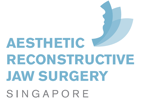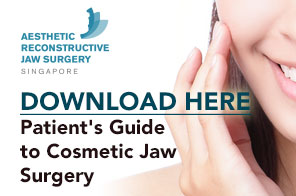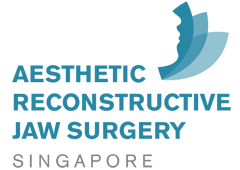Share this
Is there an age limit for corrective jaw surgery?
on September 13, 2016

Dentofacial deformities usually become apparent to the patient and their parents during the puberty growth spurt. The body undergoes a lot of changes during this period. Facial changes are most noticeable by parents and while most changes are a normal part of growing, disproportionate growth can arise. It is sometimes difficult to determine the point at which facial growth is deemed to have stopped and that no further changes are expected. Sometimes, a seemingly long lower jaw may be due to slower growth of the upper jaw, which when it catches up, will be proportionate. While waiting for that, parents are wary about subjecting their young child to surgery while at the same time concern about any undue delay. Fortunately, the window of opportunity for corrective jaw surgery is very wide.
1. Lower age limit
The youngest patient that I have done orthognathic surgery for was a 15-year- old girl. She had a sunken mid face and a protruding lower jaw. She started orthodontic treatment at 14 years of age and finished her pre-surgical orthodontics a year later. I did a Le Fort I advancement to bring out the midface and a bilateral sagittal split to set back the lower jaw. She showed no signs of relapse over the next few years. Some may feel that 15 is rather young to undergo a double jaw surgery. However, there are multiple factors beyond chronologic age, to consider when determining the optimal time for surgery. In general, most girls would have complete 95% of their growth within one year after their first menstrual cycle. For this patient, she had her first period at the age of 11, four years before the surgery. If it was a boy, I would definitely not do the surgery at 15. Boys tend to develop later and continue to grow for a longer period of time. In general, I will not operate on boys before 18.
The type of deformity is also a factor to consider in setting age limits. Patients with deformities due to excessive growth of the lower jaw usually do not have sufficient catch up growth of the upper jaw. The patient’s psychological state is also a major factor. In fact, one of the prime motivating factors for patients seeking surgery is psychological. If the patient shows emotional maturity and is psychologically affected by the deformity, early surgery is usually beneficial.
The major concerns about doing orthognathic surgery in a teenager is whether the teenage is sufficiently matured emotionally to want to undergo the surgery and whether growth has completed or at least reached a point where further growth is unlikely to be significant. Emotional maturity is gauged by talking to the patient and parents. In this regard, parents in general do know best. In any case, consent for surgery must be obtained from the parents as the patients are considered minors. With regard to growth, there are many ways of assessing but none are foolproof. Serial annual dental casts and radiographs can be compared for changes to chart the rate of growth. Bone scans with radioactive isotopes is sometimes done for cases of facial asymmetry to determine if the differential growth rate between the left and right has burned out. The decision that a patient is old enough for orthognathic surgery is based on all these factors, physical, psychological and social rather than a single parameter of chronological age.
2. The upper age limit
Some patients only present themselves for treatment at a much later stage of life. There are many reasons why they missed out on surgery during their younger days but these reasons are irrelevant. Some may simply be ignorant about it. Others may know about it but was not bothered then. What is relevant is their current reason for seeking surgery. On the psycho-social aspects, what we need to eliminate are external motivation factors such as pressure from friend and relatives. This happens sometimes when a patient is undergoing some crisis at home or work and think that changing his facial appearance can improve these external factors. For this group of patients, surgery is not advisable. We look for internal motivation factors, such as a deep seated desire to change the way they look, as an end in itself and not a means to an end.
Once we cleared any psycho social roadblocks, the only other constraint on upper age limit is the patient’s health status. Chronologic age is not always an indication of health as some 50 year olds can be healthier than a 30 year old. A more thorough physical assessment needs to be done for the older patient to uncover any potential occult disease. The bone on a matured patient also tends to be harder and less vascular than that of a young one. Multi-segment surgery is best avoided to reduce the load to the healing process. Orthodontics should be done more slowly to reduce the risk of root resorption as well.
In general, a healthy middle-aged patient is a suitable candidate for jaw surgery provided the necessary precautions such as avoiding mutli-segment surgery and slowing the orthodontic movements are taken. In fact, maxilla-mandibular advancement surgery, which is basically a double jaw surgery, is routinely done for obstructive sleep apnea patients who are typically middle-aged.
Age gives an indication of the state of development of the patient and the potential healing and recovery ability. However, it is only one of many other factors to consider when determining the suitability of a younger or older patient for corrective jaw surgery.
Share this
- Jaw Surgery (93)
- Dental Implants Singapore (90)
- Orthognathic Surgery (48)
- Replacing Missing Teeth (26)
- Missing Teeth Options (23)
- Underbite (23)
- Bone Grafting (21)
- Costs (18)
- Facial Aesthetics (18)
- Aesthetics (17)
- dental implants (16)
- corrective jaw surgery (15)
- BOTOX (11)
- Dermal Fillers (11)
- Wisdom teeth (10)
- Fixed Implant Dentures (8)
- Loose Dentures Singapore (6)
- Medisave (6)
- sleep apnea (6)
- Braces (5)
- Dental Pain (5)
- Dentures in Singapore (5)
- Loose Teeth (5)
- Tooth Extraction (5)
- jaw deformities (5)
- bimax (4)
- bone graft (4)
- maxillomandibular advancement (4)
- all-on-4 (3)
- bimaxillary protrusion (3)
- chin implant (3)
- facial asymmetry (3)
- full mouth dental implants (3)
- genioplasty (3)
- immediate implant (3)
- removal of an integrated dental implant (3)
- third molars (3)
- wisdom tooth surgery (3)
- My Dentures Don't Fit (2)
- VME (2)
- bone graft healing (2)
- distraction osteogenesis (2)
- medical tourism (2)
- obstructive sleep apnea (2)
- orthodontics (2)
- plastic surgery (2)
- CT guided dental implants (1)
- Double jaw surgery (1)
- Invisalign (1)
- Periodontal Disease (1)
- Permanent Dentures Singapore (1)
- before and after photos (1)
- facial trauma (1)
- fractured dental implant (1)
- oral appliance therapy (1)
- root canal treatment (1)
- veneers (1)
- vertical maxillary excess (1)
- September 2019 (2)
- July 2019 (2)
- May 2019 (2)
- August 2018 (1)
- October 2017 (1)
- September 2017 (2)
- August 2017 (1)
- June 2017 (2)
- May 2017 (4)
- April 2017 (1)
- March 2017 (1)
- February 2017 (3)
- January 2017 (3)
- December 2016 (1)
- November 2016 (2)
- October 2016 (4)
- September 2016 (9)
- August 2016 (5)
- July 2016 (11)
- June 2016 (14)
- May 2016 (6)
- April 2016 (2)
- March 2016 (1)
- January 2016 (7)
- December 2015 (10)
- November 2015 (4)
- October 2015 (9)
- September 2015 (7)
- August 2015 (1)
- July 2015 (6)
- June 2015 (3)
- May 2015 (7)
- April 2015 (5)
- March 2015 (8)
- January 2015 (5)
- December 2014 (7)
- November 2014 (7)
- October 2014 (6)
- September 2014 (8)
- August 2014 (5)
- July 2014 (7)
- June 2014 (8)
- May 2014 (9)
- April 2014 (10)
- March 2014 (6)
- February 2014 (8)
- January 2014 (3)
Subscribe by email
Email subscription




Comments (4)